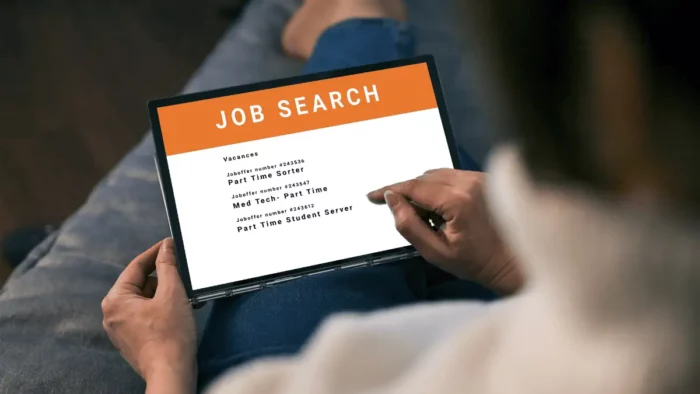Effective communication with your customers is a game-changer – in any business. Whether you’re a startup or an established enterprise, building enduring connections through impactful customer communication is critical to success.
So, here are some practical strategies to upgrade your communication game and leave a long-lasting impression on your customers.
Use Multichannel Communication
You must use a multichannel communication approach to ensure your messages reach your customers effectively. From email and social media to chatbots and SMS, you must diversify your channels based on your audience’s preferences.
The best way to reach a wider audience directly is to use a mass texting service that enables you to broadcast personalized messages efficiently and instantly to many recipients. This streamlined approach ensures that your communications are delivered promptly and allows for tailored content, addressing individual recipients’ unique preferences and needs.
Also, using texting services will expand your reach and ensure you meet customers where they are most comfortable. The versatility of multichannel communication allows you to create a seamless experience, enabling customers to transition effortlessly between different platforms while maintaining a consistent brand experience.
Related: 7 Amazing Communication Tools You Can Use With Clients
Understanding Your Target Audience: Speak Their Language
Before crafting any message, it’s crucial to understand your audience. Dive deep into your customers’ preferences, pain points, and the way they communicate.
Are they tech-savvy millennials or traditionalists who prefer a personal touch? It would be best to tailor your messages to their needs and aspirations. By speaking their language, you bridge the gap between your brand and your customers, establishing a connection that goes beyond transactional exchanges.
Consistency is Key: Across Platforms and Messages
Consistency is the glue that binds your brand message. Ensure a unified voice and message, whether it’s an email, social media post, or customer support interaction.
Consistency builds trust and reliability. When your customers can rely on a consistent experience, it strengthens your brand identity. From the tone of your emails to the design of your social media posts, maintain a cohesive brand image that aligns with your values and resonates with your target audience.
Unified Visual Branding
Ensure that the visual elements of your brand, such as logos, color schemes, and imagery, remain consistent across all platforms. This visual continuity reinforces brand recognition and creates a seamless customer experience.
Whether your potential customers encounter your brand on social media, your website, or promotional materials, the visual elements should align cohesively.
Tone and Language Consistency
Consistency in the tone and language used in your communications is equally crucial. Whether your brand adopts a friendly, formal, or humorous tone, maintain this consistency across emails, social media posts, and customer interactions.
A consistent tone helps build familiarity and sets expectations, contributing to a more cohesive and memorable brand personality.
Active Listening
Communication is a two-way street. Actively listening to your customers is as important as conveying your message. Leverage customer feedback, social media comments, and reviews to understand their experiences. Respond promptly to inquiries and concerns, demonstrating that you value their input.
By making customers feel heard and understood, you address immediate concerns and foster a sense of loyalty and engagement.
Personalization: Beyond the Generic Greeting
In the era of personalization, generic greetings no longer cut it. Leverage customer data to personalize your communication. Address your customers by name, recommend products based on their purchase history, and acknowledge milestones in their journey with your brand.
Personalized communication goes beyond just offering a product – it shows that you understand and appreciate each customer as an individual. This tailored approach improves the overall customer experience, making your brand memorable.
Timing is Everything: Strategic Communication Schedules
Analyze your audience’s behavior to determine the most effective times to send messages. Strategic timing increases the likelihood of engagement, whether it’s a promotional email, a social media update, or a customer survey.
By aligning your communication with your customers’ routines and preferences, you can ensure that your messages don’t get lost in the digital noise but instead stand out when it matters most.

Audience Behavior Analysis
Conduct a thorough analysis and gather data on your target audience’s behavior patterns. Understand when they are most active on different platforms and when they are likely to engage with your content.
By leveraging tools and analytics, identify the peak times when your audience is receptive to your communication. This data-driven approach allows you to schedule your message delivery to maximize impact.
Platform-Specific Timing
Different communication channels may have different peak periods. Tailor your communication schedules to each platform’s unique dynamics.
For example, the optimal time for a social media post may differ from the ideal timing for an email campaign.
By customizing your communication schedule based on platform-specific insights, you increase the chances of catching your audience’s attention at the right moment.
Transparency Builds Trust: Open and Honest Communication
Trust is the cornerstone of any successful customer relationship, and transparency is the key to building it. Be open and honest in your communication, especially when addressing challenges or issues.
If there’s a delay in delivery, a product is out of stock, or there’s a service interruption, communicate these issues clearly and promptly. Customers appreciate honesty, and it fosters a sense of reliability and integrity.
Building a transparent communication strategy reinforces your commitment to customer satisfaction. It strengthens the bond between your brand and your audience.
Continuous Improvement: Evolve with Customer Feedback
The landscape of customer preferences is ever-changing, and your communication strategy should evolve accordingly. Collect and analyze customer feedback to identify areas for improvement. Implement changes based on this feedback to continually enhance the overall customer experience.
Whether refining your messages’ tone, optimizing response times, or incorporating new communication channels, a commitment to continuous improvement demonstrates your dedication to meeting customer expectations in an ever-evolving market.
Conclusion
You create a robust communication strategy by understanding your audience, maintaining consistency, actively listening, adopting personalization, strategic timing, transparency, multichannel communication, and continuous improvement.
This strategy boosts customer loyalty and positions your brand as a trusted partner in your customers’ journeys. Integrating these principles into your communication approach propels your business toward lasting success. It establishes meaningful connections that stand the test of time.





